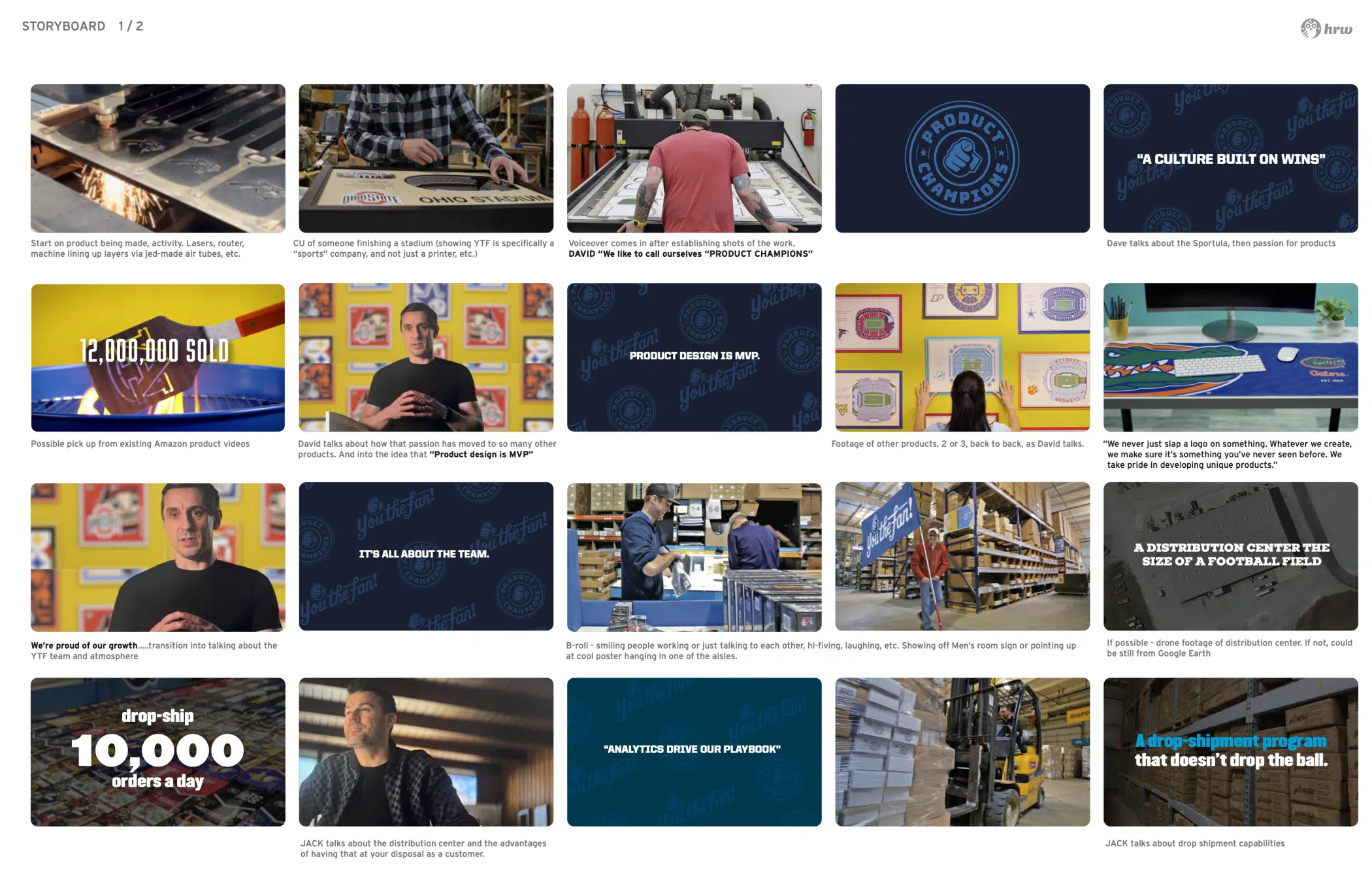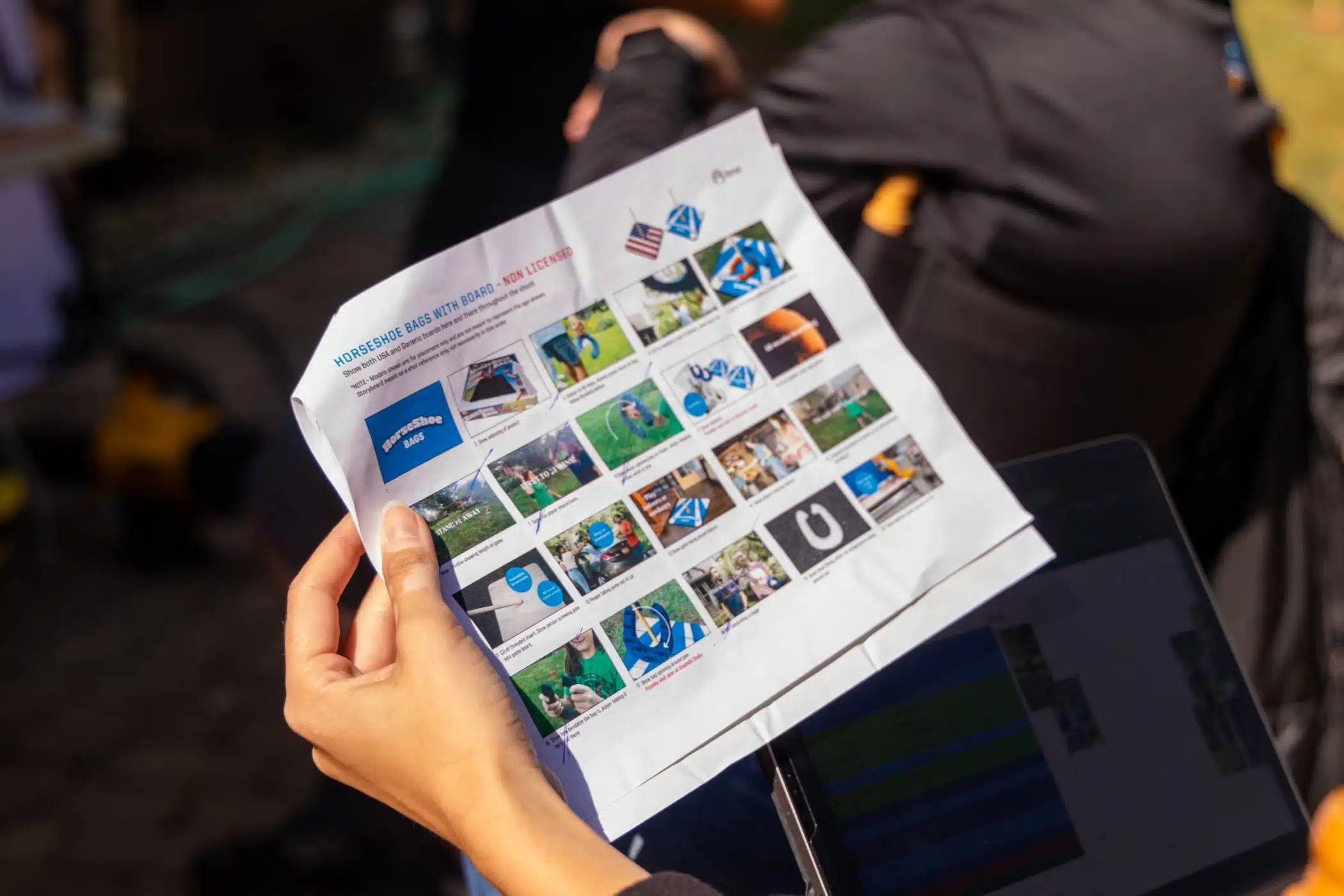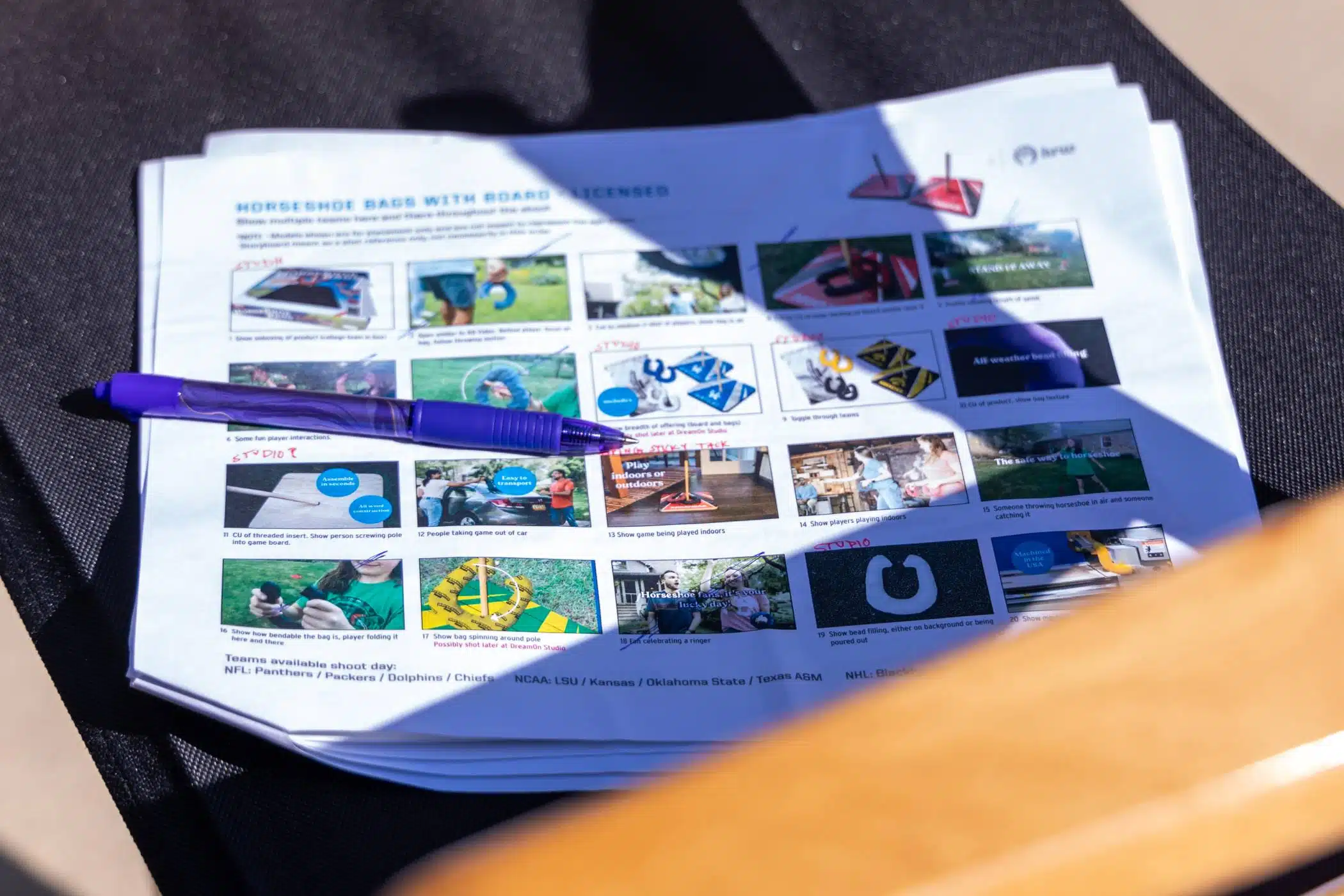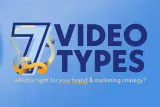Storyboarding Benefits, Tips & Tricks for Stand Out Videos
Tech Tips
 Posted by: DreamOn Studios 3 months ago
Posted by: DreamOn Studios 3 months ago
Can you create a great narrative video without a plan? Rarely! Your video might be visually stunning, but the story can get lost without a shot list and a direction your production team can get aligned on. This is why storyboarding is such a helpful step in the video creation process.
Not only does it create efficiency for a production team, but it can also build excitement for clients and collaborators who can visualize the end product and speak into the narrative. Storyboarding is a win-win for clients and the production team all around!
In this article, we asked DreamOn Studios cinematographer and editor Andrew Palladino to give you a sneak peek into the world of storyboarding and video production. He also shares some helpful tips and tricks to create standout videos using storyboarding.
What is Storyboarding?
Storyboarding is a process of creating a visual representation of the story you want to tell, like a blueprint of your video. It’s not much different than creating a comic book version of your video before actually filming it. Think of it as a sneak peek into the finished product and a shot list that ensures you capture all the important moments in your story.
To give you a visual of what storyboarding looks like, here is an example from our friends at YouTheFan!

The Benefits of Storyboarding
Clarity: Speak a thousand words in one image
“Storyboards are great visual representations of what a shot will look like,” says Andrew. “On a shot list, a long detailed description of a shot can be helpful, but it can also be confusing or misleading. But an image gives you an instant look at what to shoot, especially for those who think very visually. A picture is worth a thousand words!”
Communication: Align your team with a singular vision
Without a storyboard, your team may lose an important line of communication. What gets lost in words can often be clarified with an image. An image often creates an ‘aha’ moment for the team working on the video as well as for the client.
“Storyboards help align the team on a singular vision,” says Andrew. “Storyboards also force the team to put thought and consideration into the film before shooting a single frame.”
Efficiency: Create a prototype before you start filming
“A big point for storyboards is that they help you visualize the edit before you start shooting,” Andrew explains. “When you storyboard, you can see how a sequence may play out, which can provide insight on framing changes or camera movement based on other shots in the same sequence.
“All in all, storyboards let you create a prototype of the video itself to ensure that’s truly what you want to capture through the lens.”
5 Storyboarding Tips to Make Your Video Stand Out
#1 Start with big vision brainstorming, and then work backward
Start with a big vision brainstorming and then start filling in the specifics of what is achievable and within the project’s scope. To help you get started, here are some questions to get your brainstorming juices flowing:
- What is the main message or story you want to convey?
- Who is the target audience of this video? What do they care about?
- What emotions or feelings do we want to evoke?
- What are the key scenes or shots that are essential to telling the story?
- What visual style or aesthetic do we want to use for this video?
- What kind of music or sound effects will help enhance the story?
- Are there any specific camera angles or movements we want to use to convey a certain feeling or message?
- Are there any visual effects or graphics that we want to use to enhance the story?
- How long should the video be to tell the story and stay engaging?
- What is the call-to-action or next step that we want the audience to take?
“As you go through the process of brainstorming and then working backward into specifics, you might realize that it may be great to have a large sweeping crane shot, but another shot option might serve the project just as well with much less time and money needed,” says Andrew.
“Overall, remember brainstorming and creating your storyboard is a great time to align your vision with the client’s so that you can be confident that when you pull out the camera to shoot, you’re prepared.”
#2 Keep the heart of the story in mind
“If you are collaborating with a client on a shot list, I would encourage you to help the process by keeping the heart of the story in mind,” says Andrew.
To keep the heart of the story in mind, dig deeper into some of your brainstorming questions with clients.
For example, for question one listed above, dig deeper with follow-up questions:
- What is the main message or story you want to convey?
- Why is this message important?
- What does this story say about you?
- How does the story make you feel?
- What imagery comes to mind when you think about this story?
- What do you want to make sure your message does NOT say?
“Listen to what your client is communicating about what is important and offer suggestions on possible shots that would align with that vision,” continues Andrew. “By doing this, you ensure you capture the heart of what your client wants to communicate in your video while offering your expertise on how to do that on film.“
#3 Use your storyboard to create a shot list
A shot list outlines all the shots that must be captured during a video production. It includes details such as shot type, camera angles, lighting, and necessary equipment. Ultimately, a shot list helps ensure a more efficient production process.
When your storyboard informs your shot list, you should have a wide variety of shots to cover the story you want to tell, including options you can adjust for in the editing process. The storyboard then offers a throughline and a sense of clarity, even as things get shot out of order.
“There are different ways to organize a shot list, but I recommend organizing your shots to the most efficient order of shooting,” says Andrew. “This might mean shooting the story out of order from what is planned in the edit to maximize your time and resources.”
Here are some tips for organizing your shot list:
- Divide your shots into categories (scene types, actors, etc.)
- Number each of your shots for tracking
- Make note of each shot’s details and their place in the storyline
#4 Use a photo board as a visual for your storyboard
There are many types of storyboards! The most conventional type is pencil-drawn images.
“While pencil-drawn images are helpful and quick to produce, I prefer to use photo boards if possible,” explains Andrew. “When frames are drawn, for example, proportions can be off, and sometimes shots are impossible to replicate with a camera because the drawing does not match reality. For this reason, photo boards are usually more helpful.”
Here is an example of a great photo board from our client, YouTheFan, which was created in partnership with our friend Greg Clark and his team from HRW!

#5 Use tools, but remember what you capture through the lens matters most
“There are many tools to help with storyboarding,” says Andrew. “Adobe Photoshop, Storyboarder, or even PowerPoint can help you create images and organize them to create a flow of the edit in mind.
“On the other hand, these are just tools to help you, and what really matters is what you capture through the camera’s lens. You may be just as well off drawing your storyboards with a pencil and pad of paper!”
See YouTheFan’s finished product!

Conclusion: Storyboarding Creates Efficiency and Standout Videos!
In summary, remember storyboarding creates efficiency for a video production team and builds excitement for clients and collaborators. It’s a win-win all around!
Here’s a quick breakdown of Andrew’s storyboarding tips:
- Start with big vision brainstorming, and then work backward
- Keep the heart of the story in mind
- Use your storyboard to create a shot list
- Use a photo board as a visual for your storyboard
- Use tools, but remember what you capture through your lens matters most
Are you ready to tell your story on video? Let’s bring your dream to life! Schedule a free discovery call or studio tour today to get started!
Categories:
About: DreamOn Studios
You May Be Interested In:

10 Ways to Remix, Repurpose, & Reimagine Your Video
3 weeks ago by DreamOn Studios

5 Ways to Use Video in Healthcare Marketing (+Tips to Maximize Effectiveness)
2 months ago by DreamOn Studios

7 Video Types: Which is Right for Your Brand and Marketing Strategy?
4 months ago by DreamOn Studios

The Best of 2023: Thanks to Our Community!
7 months ago by DreamOn Studios